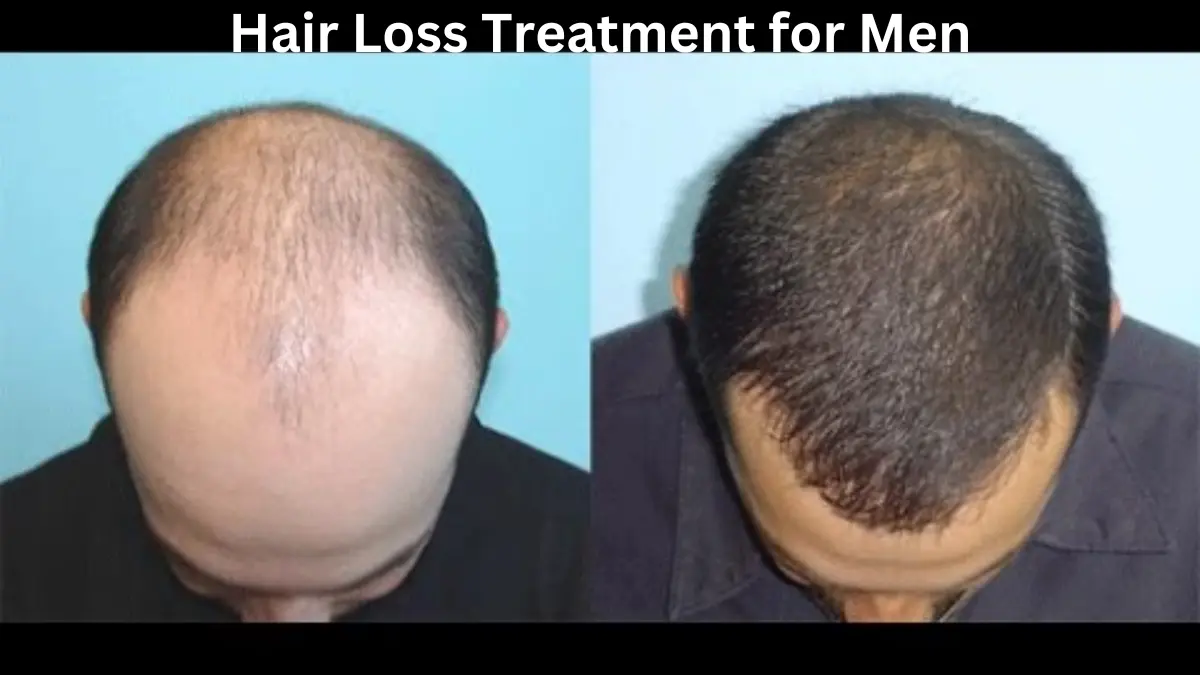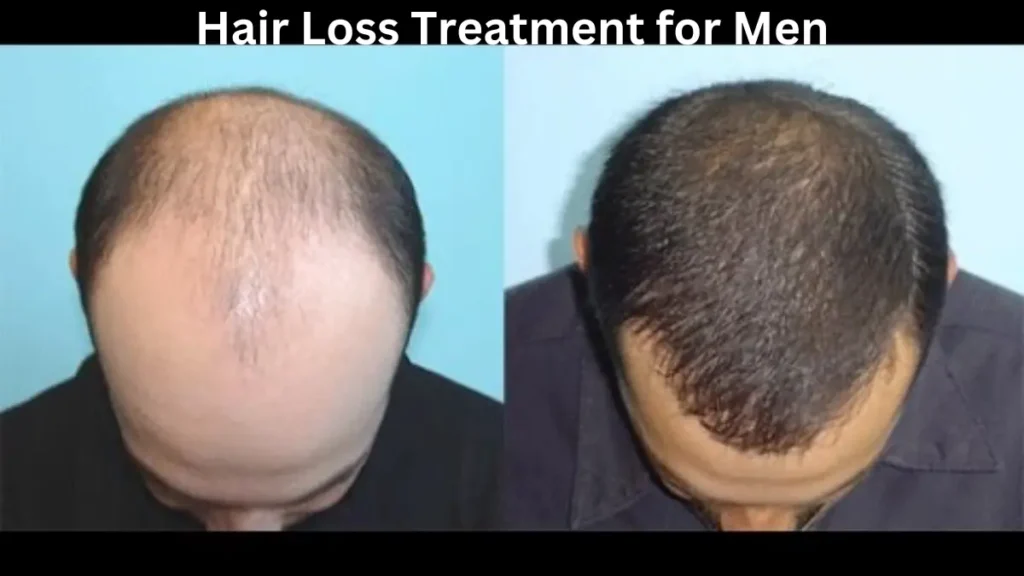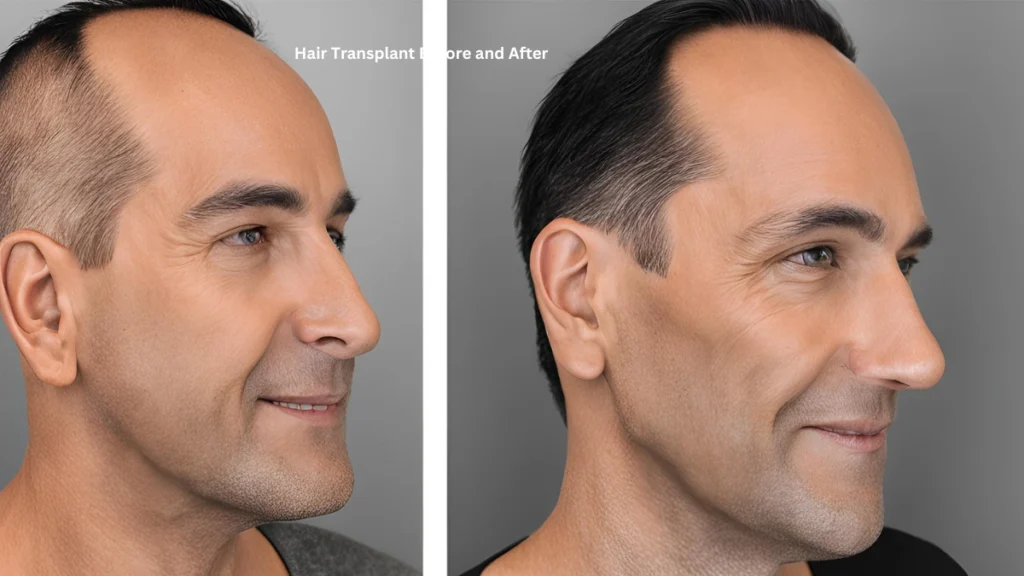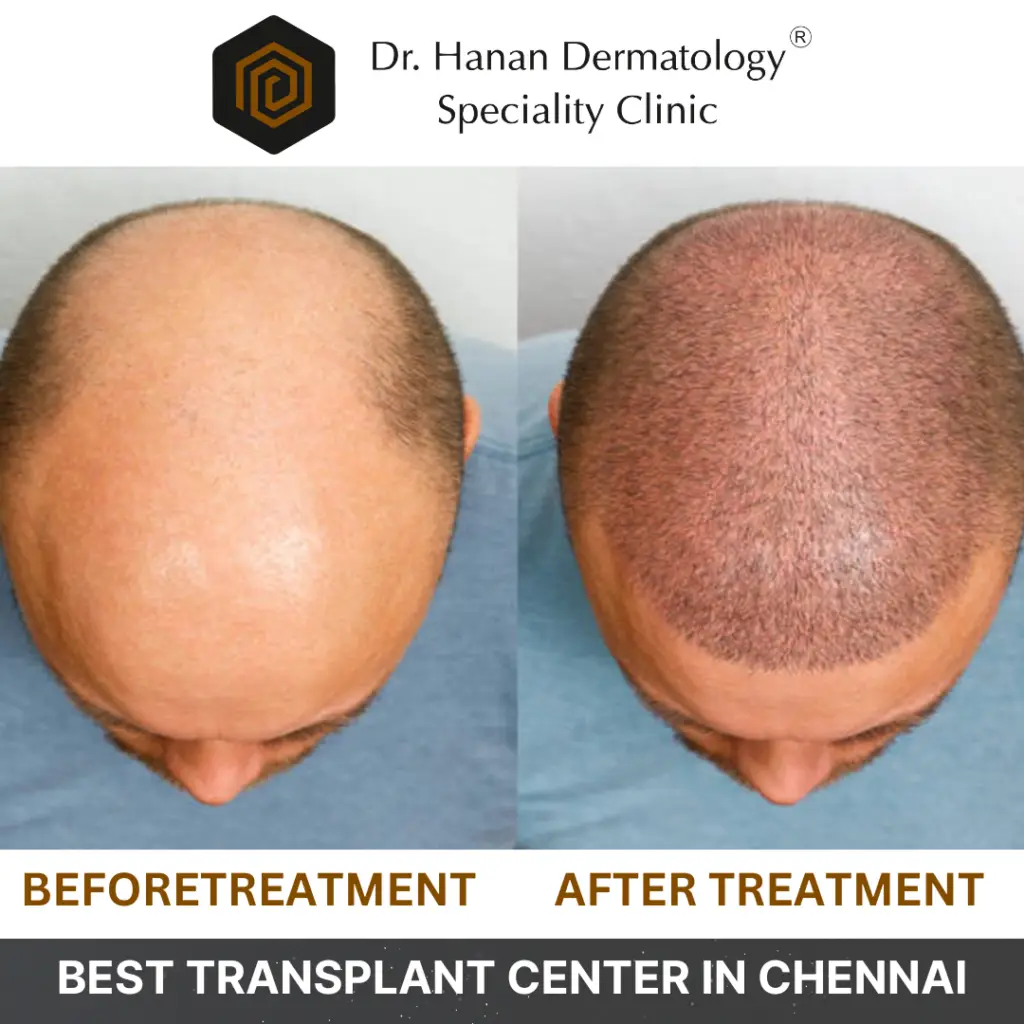

Hair Loss Treatment for Men: Hair loss is a common concern among men, with around 85% of men experiencing noticeable hair thinning by the time they reach 50. This issue can start much earlier, often in their 20s or 30s. While male-pattern baldness (androgenetic alopecia) is the most common cause, other factors such as stress, diet, and medical conditions can contribute to hair loss. Fortunately, there are several effective treatments available to help men regain their confidence and prevent further hair thinning. In this article, we’ll explore the causes of hair loss in men, the best treatment options, and lifestyle changes to help keep your hair healthy.
Book Your Consultation Today
Visit Dr. Hanan Dermatology Specialty Clinic in Padur, OMR, Chennai. Schedule your consultation today and start your journey to fuller, healthier hair.
For more information and to book your appointment, visit our clinic or call us at the clinic’s contact details.
Hair Loss Treatment for Men: Effective Solutions for Hair Regrowth
Understanding Hair Loss in Men

What Causes Hair Loss?
Hair loss in men typically results from male-pattern baldness, a hereditary condition influenced by genetics and hormones. The hormone dihydrotestosterone (DHT) plays a key role in shrinking hair follicles, eventually preventing hair from growing. While male-pattern baldness is inevitable for many men, other causes of hair loss include:
- Hormonal imbalances: Changes in testosterone and other hormones can accelerate hair thinning.
- Stress: Physical or emotional stress can lead to temporary hair shedding known as telogen effluvium.
- Nutritional deficiencies: A lack of essential nutrients like protein, iron, and vitamins can weaken hair.
- Medical conditions: Thyroid issues, alopecia areata, and scalp infections may also contribute to hair loss.
Common Types of Hair Loss
Hair loss can manifest in several ways:
- Receding hairline: A gradual retreat of hair along the temples or forehead.
- Thinning crown: A thinning patch that begins at the top of the scalp and spreads.
- Full bald spots: Larger areas of hair loss, often at the crown or the top of the head.
Read more: Hair Transplant Before and After
Non-Surgical Treatments for Hair Loss

1. Medications
For many men, medications offer the best solution to slow down or reverse hair loss.
- Minoxidil (Rogaine): This FDA-approved over-the-counter treatment is applied topically to the scalp. It works by stimulating hair follicles, encouraging new hair growth, and slowing further hair loss. Minoxidil is suitable for men with mild to moderate hair loss. However, it requires ongoing use—discontinuing treatment results in the return of hair loss.
- Finasteride (Propecia): This prescription pill works by inhibiting DHT, the hormone responsible for hair follicle shrinkage. Finasteride can help men regrow hair, particularly at the crown or along the hairline. However, it can have side effects, including a decrease in libido, and is not suitable for women.
2. Platelet-Rich Plasma (PRP) Therapy
PRP therapy involves extracting platelets from your blood and injecting them into the scalp to stimulate hair growth. The growth factors in platelets encourage the regeneration of hair follicles. PRP is a non-invasive treatment that works well for men experiencing hair thinning. Results can take several months to become noticeable, and multiple sessions are often needed.
3. Low-Level Laser Therapy (LLLT)
Laser therapy uses low-level lasers to stimulate hair follicles and increase blood circulation to the scalp. It’s a non-invasive procedure that can be performed at home using laser combs or helmets. LLLT has shown positive results in promoting hair growth, although results can vary from person to person.
4. Hair Growth Shampoos and Conditioners
Specially formulated shampoos and conditioners can add volume to thinning hair. Look for products containing ingredients like biotin, caffeine, or ketoconazole. While these products may not regrow hair, they can help manage thinning hair by improving scalp health and reducing hair breakage.
Read more: Best Hair Transplant Center in Chennai 2024
Surgical Solutions for Hair Loss
1. Hair Transplant Surgery
Hair transplants are a permanent solution for severe hair loss. During the procedure, healthy hair follicles are moved from the back or sides of the scalp to the thinning or balding areas. There are two main types of hair transplants:
- FUT (Follicular Unit Transplantation): A strip of scalp is removed, and hair follicles are transplanted to the balding areas.
- FUE (Follicular Unit Extraction): Individual hair follicles are extracted and transplanted, leaving minimal scarring.
While hair transplants provide long-lasting results, they are expensive and may require multiple sessions.
2. Scalp Micropigmentation
Scalp micropigmentation (SMP) is a non-surgical treatment that involves tattooing tiny dots of pigment onto the scalp to create the appearance of fuller hair. It’s ideal for men with shaved or closely cropped hair. While it doesn’t restore hair, it can help improve the appearance of a receding hairline or thinning crown.
3. Hairpieces and Wigs
For those looking for immediate results, hairpieces and wigs are an option. Advances in hairpiece technology mean that they can look incredibly natural, though they do require regular maintenance and can be costly over time.
Lifestyle Changes to Prevent or Slow Down Hair Loss
1. Diet and Nutrition
A well-balanced diet is essential for maintaining healthy hair. Ensure you’re getting enough of the following nutrients:
- Iron: A deficiency can lead to hair shedding.
- Vitamin D: Crucial for follicle health.
- Biotin: Supports hair growth and strength.
- Omega-3 fatty acids: Help maintain healthy scalp circulation.
Avoid excessive consumption of vitamin A and processed foods, as these can contribute to hair thinning.
2. Stress Management
Chronic stress can lead to hair loss, so it’s important to manage stress through relaxation techniques such as yoga, meditation, or regular exercise. These practices not only benefit your mental health but also promote healthy hair growth.
3. Proper Hair Care Routine
Treat your hair gently to prevent damage. Avoid harsh chemicals, excessive heat styling, and tight hairstyles that can cause breakage. Wash your hair regularly with a gentle shampoo, and use a conditioner to keep it hydrated.
Myths and Misconceptions About Hair Loss Treatments
Many myths surround hair loss and treatments. It’s important to separate fact from fiction:
- Myth: Wearing hats causes hair loss. Fact: Hats do not cause hair loss, though tight-fitting hats may lead to traction alopecia.
- Myth: Hair loss treatments work instantly. Fact: Most treatments require time to show results, and consistency is key.
How to Choose the Right Treatment for You

Selecting the right hair loss treatment depends on various factors such as your age, the stage of hair loss, and your budget. Non-surgical treatments like minoxidil and finasteride are often the first options to explore, while surgical solutions like hair transplants may be considered for more severe cases. Always consult with a dermatologist or hair restoration expert to determine the best course of action based on your individual needs.
Read more: Hair Replacement in Chennai Top Clinics, Methods & Cost 2025
Conclusion
Hair loss is a natural part of aging for many men, but it doesn’t have to mean the end of your hair. With various treatment options available, from medications and therapies to surgical solutions, there’s hope for those looking to regain their hair and confidence. Start early, stay consistent with your treatment plan, and make lifestyle changes to maintain healthy hair for as long as possible.
Remember, whether you choose non-surgical treatments or surgical options, the key is finding a solution that works for you. Hair loss doesn’t define you—take control of your hair health and feel confident at any stage of life.
FAQs
What is the most effective treatment for male-pattern baldness?
The most effective treatments for male-pattern baldness are medications like Minoxidil (Rogaine) and Finasteride (Propecia). Minoxidil is an over-the-counter topical treatment that helps stimulate hair growth, while Finasteride is an FDA-approved oral medication that inhibits DHT (dihydrotestosterone), the hormone responsible for hair follicle shrinkage. Both treatments are most effective when used early, and results can vary from person to person.
How long does it take for hair loss treatments to show results?
Hair loss treatments typically take 3 to 6 months to show visible results. With Minoxidil, it may take up to 4 months to start seeing new hair growth. Finasteride generally requires at least 3 to 6 months to begin slowing hair loss and promoting hair regrowth. Patience and consistent use are crucial for achieving optimal results.
Are hair transplants worth the cost?
Hair transplants can be a permanent solution for severe hair loss, but they are expensive, with costs often ranging from ₹50,000 to ₹1,50,000 or more depending on the procedure type (FUT or FUE) and the number of grafts required. They offer natural-looking results and can provide a long-lasting solution for hair restoration. However, multiple sessions may be needed, and there’s always the risk of complications. It’s essential to consult with a certified hair transplant surgeon to determine if you’re a good candidate.
Do PRP (Platelet-Rich Plasma) injections work for hair regrowth?
PRP therapy has been shown to be effective for many men experiencing hair thinning. It involves injecting your own platelets into the scalp to stimulate hair growth. While it is a non-invasive option with minimal downtime, multiple sessions are often required for noticeable results, and it may not be suitable for everyone. PRP works best for men in the early stages of hair loss or those with thinning hair.
Can lifestyle changes help prevent hair loss?
Yes, adopting a healthy lifestyle can significantly help prevent or slow down hair loss. Key changes include:
- Eating a balanced diet rich in vitamins, iron, and protein to nourish the hair follicles.
- Managing stress through relaxation techniques like yoga or meditation.
- Using gentle hair care products and avoiding excessive heat or tight hairstyles.
Although lifestyle changes may not reverse male-pattern baldness, they can help maintain the health of your hair and slow down further thinning.


[…] Read more: hair treatment for hair loss […]